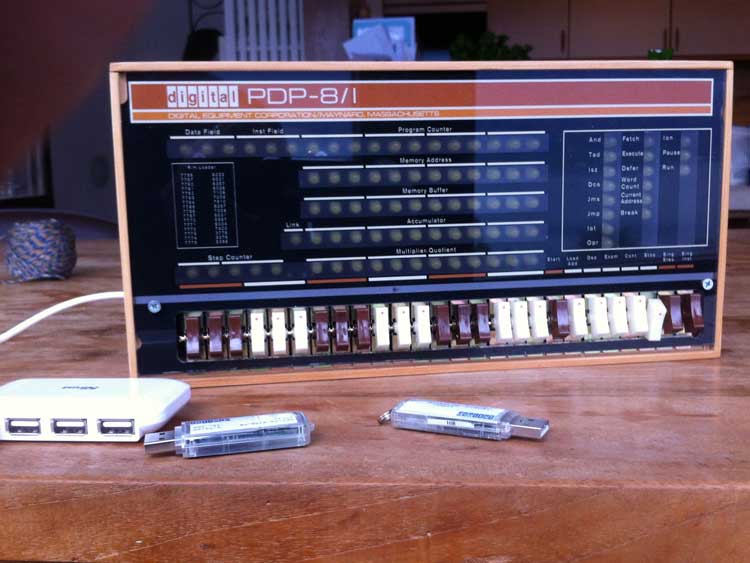Raspberry Pi replica of the legendary 1960s PDP-8
Published 6 April 2015 by James Becht
A Swiss hacker has just developed a prototype of an emulated PDP-8, the very first commercially successful mini-computer, of which 50,000 were originally manufactured.
For those who dream about vintage machines—who are retro-nostalgic about computers that they have heard about, seen photos of, caught glimpses of in movies—but who, either too young or not yet born, have never experienced them firsthand, for the past several years now, there exist magic emulators. The first that comes to mind is Hercules, an open source software implementation of the early 1970s IBM System/370 mainframe architecture, which operated on MVS. But there is also the fabulous SIMH, which can simulate several PDP models, a VAX, various IBM (1401, 1620, 1130…), Altair 8800, HP (2116, 2100…), Honeywell, as well as a few other legendary machines, dating as far back as 1956 (LGP-30) and 1959 (PDP-1 and IBM 1401).
Awesome
One of these old machines reproduced by SIMH had a deep influence on computer programmers in the 1960s and ’70s: the PDP-8 by Digital Equipment Corporation (better known by its acronym DEC), which produced 50,000 units, mainly for laboratory experiments. An entire website is dedicated to it: www.pdp8online.com. For Mac users, there is also a specific emulator for the PDP-8/E model. The original machines are currently worth between $5,000 and $10,000 on the market.
Using SIMH’s simulation software for PDP-8, Swiss hacker Oscar Vermeulen has created a hardware reproduction that is simply awesome.
Previous replica initiatives were a bit expensive, if not prohibitively priced, such as Spare Time Gizmos’ SBC6120, which sold for $999 in a 2011 Kickstarter campaign. This time, on the contrary, thanks to a clever use of Raspberry Pi, a certain talent for electronics design, ample time and lots of patience, you too can build your own PDP-8 for under $150!
The project took a grand total of two and a half months to develop the first working prototype. Designwise, the 2:3 model uses wall switches and a photo of the original façade printed on a transparent acrylic panel. Electronics include a PCB and a Raspberry Pi B+ micro-controller.
92 LEDs and 26 switches later (well, not only… you know what we mean) and here is the result!

Presentation of PiDP, “modern replica” of PDP-8/I :
Project blog on Obsolescence Guaranteed
Another attempt, in 2013, based on Arduino Mega, by Ricardo Guerreiro
